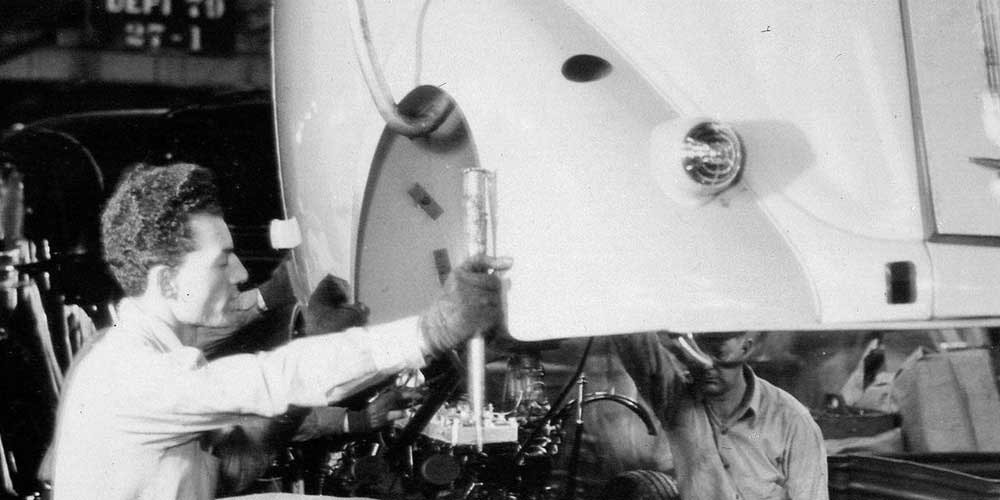By Wayne Ferens
Posted 12.20.2016
Standing only 47 inches tall on all four Firestone performance street tires mounted on Kelsey Hayes 15 by 7-inch, five-spoke Magstar wheels, the 1967 Ford Experimental Mach 2 was as stylish as anything that came out of Dearborn during that era. It was also the second, mid-engined experimental vehicle produced by the Ford Motor Company; the first being the Mustang I in 1962.
What about the GT40 you say? Well they were vehicles built for racing in Great Britain although some have been converted for street use. This Mach 2 was designed strictly for the street and with mass production in mind. Like any experimental vehicle, final approval for production may come only after the marketing people and number crunching accountants do their work.
The initial concept was completed in Ford's Dearborn design studio under the watchful eye of Eugene Bordinat Jr., then V.P. of Styling and the Ford Engineering Center, but the final construction and assembly was done at the Kar Kraft facility under the direction of Ed Hull. Kar Kraft was an independent company located in Dearborn, but owned by Ford and used for special projects and race car preparation. The Mach 2 is a highly modified two-seater on a shortened version of a 1967 Mustang convertible floor pan.
With "GT" styling in mind, the Mach 2 concept car was powered by Ford's small in, outside dimension and light weight 289 CID high performance engine mounted mid-ship. This V8 design introduced sports-type performance to the Fairlane in 1963 and the GT40 in 1965. The 289 CID with modifications was a competition engine, capable of racing and winning against many of the best-known sports cars in the world. A ZF 5-speed transaxle was also fitted, the spare tire mounted above - and underneath the rear deck.
To compliment the mid-engine concept, the semi-monocoque steel and fiberglass bright red painted body featured raised carburetor intake ports mounted on the rear deck, doors that open into the roof, a rear-canted radiator exhaust grill depressed in the hood surface, cargo space for two suitcases behind the air exhaust and dual engine exhaust trumpets that exit under the chrome mounted bumper below a chopped-off rear metal grill.
There was ducted ventilation to the heater and air-conditioner, fixed and flush-mounted side windows with a movable hatch and 'Raydyot' style door mounted bullet racing mirror. The seats were fixed with adjustable pedals to the driver and inside the cabin was a lever that manually operated the opening and closing of the retractable headlights.
When opened the headlights would rotate 120 degrees into the lower front quarter panel just behind the front bumper. Attached to each side on the roof pillar is a unique round emblem with an American flag opposite a checkered flag with the letters "GT" underneath. A square steel tubed frame was added to the front end. The driveshaft tunnel was used for pipes and water hoses. The rear suspension was trailing link in combination with two lateral control arms. Front disc brakes, a quick-ratio manual steering from the Mustang and Galaxie drum brakes on the rear. Coil springs with adjustable Koni shocks allowed stiffer control of the suspension.
Total vehicle weight in street trim was 2,650 pounds. Ford used the vehicle in their advertising stating that the cost of the concept car was $150,000. The Mach 2 was put through its paces at the Dearborn Proving Ground and spent most of its working days as a show car first being introduced at the Chicago Auto Show in 1967. The car was placed in storage until 1970 and then disappeared.
Is this the Mustang that could have been? After 52 years of production the Mustang still excites me - just like the one that got away.
Wayne Ferens is retired after a 45 year career in the automobile business that included General Motors, Ford Motor Company, Honda Motor Co. and new car dealer. Auto history is one of his passions and has written much about the industry. He is presently a SAE Board Member.



